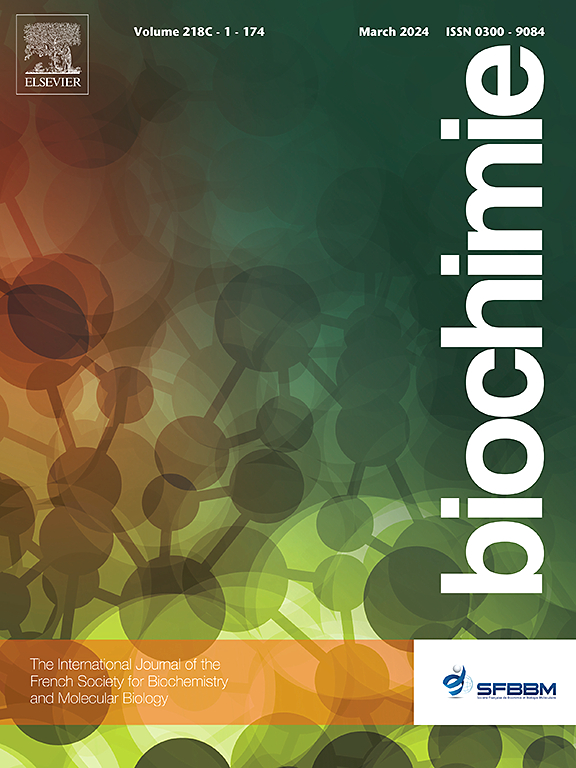Achatina fulica haemocyanin-derived peptides as novel antimicrobial agents
IF 3.3
3区 生物学
Q2 BIOCHEMISTRY & MOLECULAR BIOLOGY
引用次数: 0
Abstract
Haemocyanin-derived peptides were previously found in semi-purified fractions of mucus secretion from the snail Achatina fulica, which exhibited an inhibitory effect on Staphylococcus aureus strains. Here, an in silico rational design strategy was employed to generate new antimicrobial peptides (AMPs) from A. fulica haemocyanin-derived peptides (AfH). The designed peptides were chemically synthetized using the Fmoc strategy, and their antimicrobial activity against Escherichia coli and S. aureus strains was evaluated using the broth microdilution method. In addition, the cytotoxic activity on Vero, HaCat, and human erythrocyte cells was also determined. The results demonstrated that 15-residue alpha-helical and cationic synthetic peptides exhibited the highest biological activity against Gram-positive strains, with minimum inhibitory concentrations (MIC) in the range from 7.5 to 30 μM. The positive selectivity index suggests a higher selectivity, primarily on the microorganisms evaluated, but not on eukaryotic cells. In this study, A. fulica hemocyanin was identified as an appropriate protein model for the rational design of AMPs against bacteria of public health significance. Further studies are required to evaluate the activity of the peptides on Gram-negative bacteria other than E. coli.

作为新型抗菌剂的 Achatina fulica 血蓝素衍生肽。
血红蛋白衍生肽先前在半纯化的蜗牛黄斑螺粘液分泌物中发现,它对金黄色葡萄球菌菌株具有抑制作用。本研究采用一种硅理性设计策略,从黄曲霉血青素衍生肽(AfH)中生成新的抗菌肽(amp)。设计的肽段采用Fmoc策略进行化学合成,并采用肉汤微量稀释法评价其对大肠杆菌和金黄色葡萄球菌的抑菌活性。此外,还测定了其对Vero、HaCat和人红细胞的细胞毒活性。结果表明,15残基α -螺旋和阳离子合成肽对革兰氏阳性菌具有最高的生物活性,其最小抑制浓度(MIC)在7.5 ~ 30 μM范围内。正选择性指数表明具有较高的选择性,主要是对所评价的微生物,而不是对真核细胞。在本研究中,黄芽孢杆菌血青素被确定为合理设计抗细菌抗菌肽的合适蛋白模型。需要进一步的研究来评估肽对除大肠杆菌外的革兰氏阴性菌的活性。
本文章由计算机程序翻译,如有差异,请以英文原文为准。
求助全文
约1分钟内获得全文
求助全文
来源期刊

Biochimie
生物-生化与分子生物学
CiteScore
7.20
自引率
2.60%
发文量
219
审稿时长
40 days
期刊介绍:
Biochimie publishes original research articles, short communications, review articles, graphical reviews, mini-reviews, and hypotheses in the broad areas of biology, including biochemistry, enzymology, molecular and cell biology, metabolic regulation, genetics, immunology, microbiology, structural biology, genomics, proteomics, and molecular mechanisms of disease. Biochimie publishes exclusively in English.
Articles are subject to peer review, and must satisfy the requirements of originality, high scientific integrity and general interest to a broad range of readers. Submissions that are judged to be of sound scientific and technical quality but do not fully satisfy the requirements for publication in Biochimie may benefit from a transfer service to a more suitable journal within the same subject area.
 求助内容:
求助内容: 应助结果提醒方式:
应助结果提醒方式:


